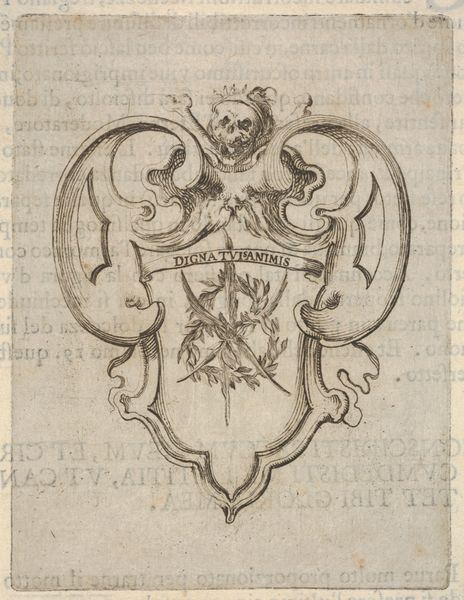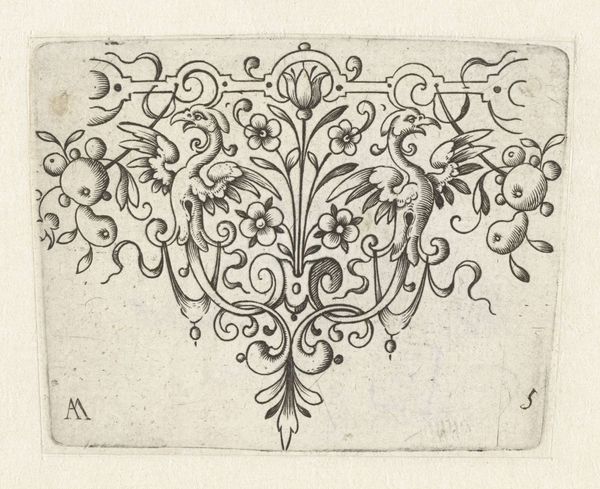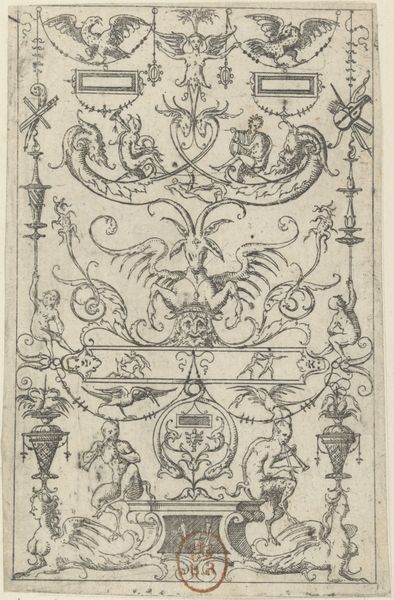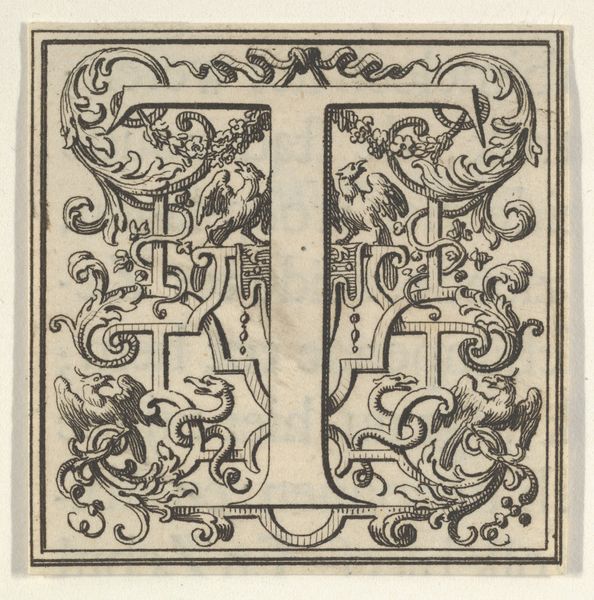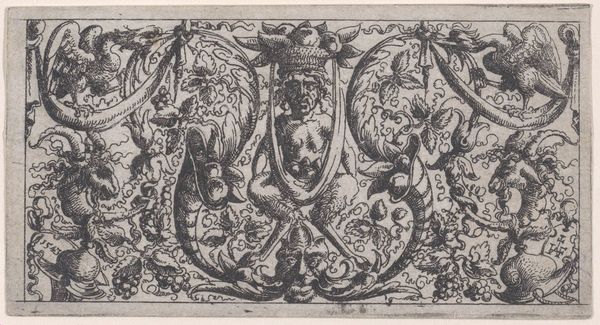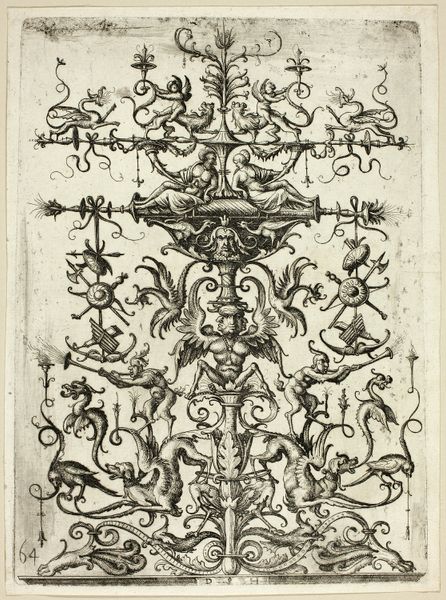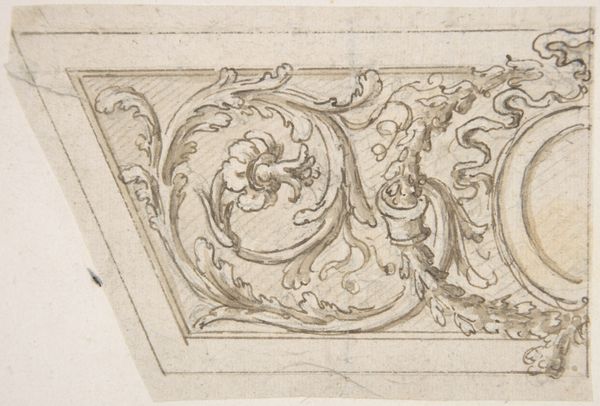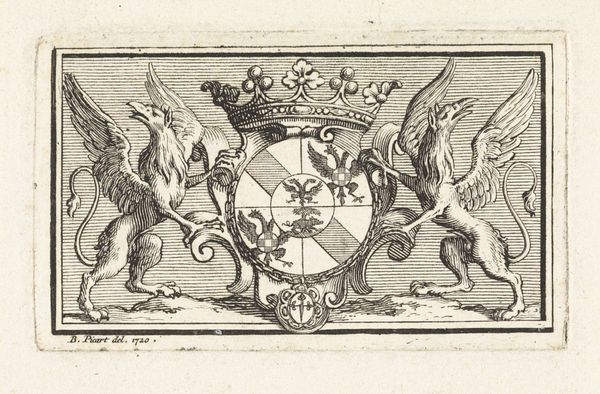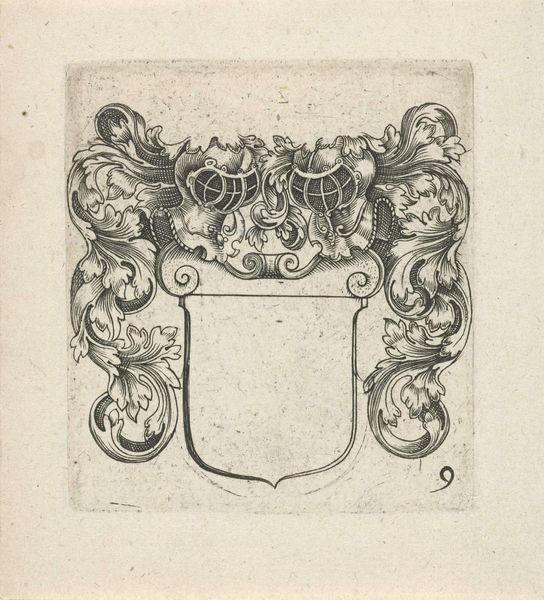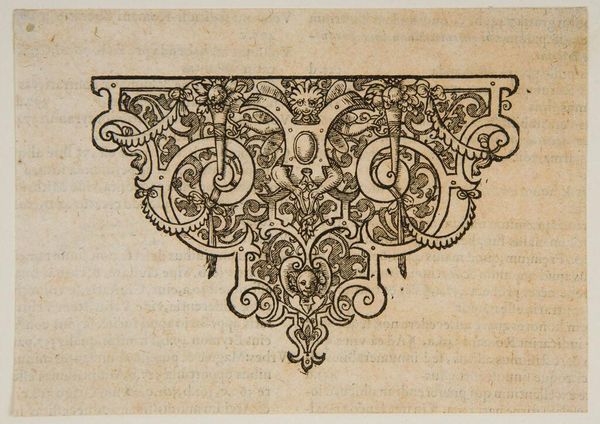
print, engraving
# print
#
figuration
#
11_renaissance
#
northern-renaissance
#
decorative-art
#
engraving
Dimensions: 1 11/16 × 5 7/8 in. (4.29 × 14.92 cm) (sheet)
Copyright: Public Domain
Heinrich Aldegrever created these three brooches side by side in 1536 using engraving. These brooches are designs for luxury objects intended for a wealthy merchant or aristocratic elite in Northern Europe. The proliferation of printed images at this time spurred the rise of a consumer culture. Brooches like this might have been worn as a sign of wealth, status, or affiliation, and the imagery may carry symbolic meaning related to family lineage. The artist’s monogram and the date are prominently displayed, suggesting the growing importance of individual authorship and the art market. Ornament prints like this exemplify the rise of the graphic arts as a means of disseminating designs and asserting artistic status. By looking at surviving examples of jewelry from this period, account books, and sumptuary laws, we can learn more about how people consumed images and luxury goods in the 16th century.
Comments
minneapolisinstituteofart about 2 years ago
⋮
Heinrich Aldegrever devoted a third of his 300 or so engravings to ornament. This sheet exemplifies the Renaissance impulse toward symmetry and crowding. Goldsmiths would have freely recombined these foliated elements to suit their customers’ tastes.
Join the conversation
Join millions of artists and users on Artera today and experience the ultimate creative platform.

